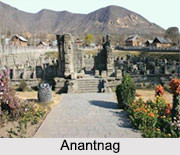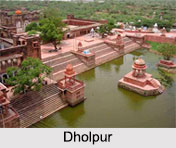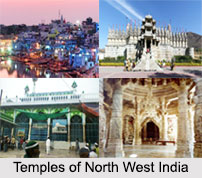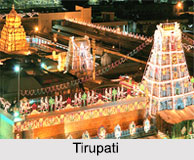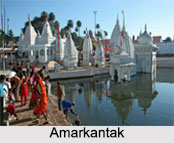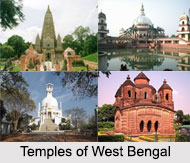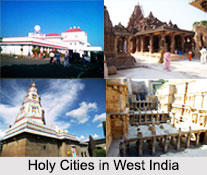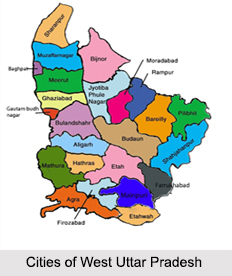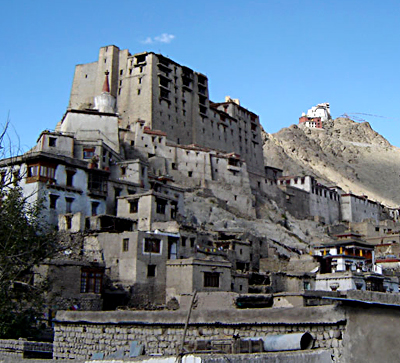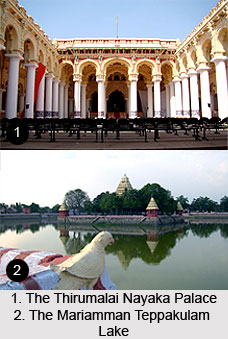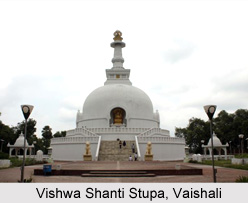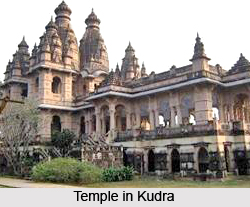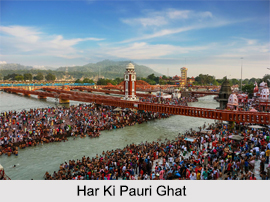Introduction
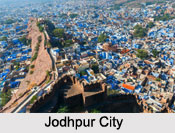 Jodhpur is the epicenter of the tourism in Rajasthan. It is the second largest region in the state of Rajasthan. It stands as a beauty in the middle of arid landscape. This medieval city is dotted with palatial buildings, forts, temples and gardens. Jodhpur draws the attraction to the tourists for Mehrangarh Fort, which is only a few kilometer from the main city. Jodhpur hosts a large number of fairs and festivals throughout the year.
Jodhpur is the epicenter of the tourism in Rajasthan. It is the second largest region in the state of Rajasthan. It stands as a beauty in the middle of arid landscape. This medieval city is dotted with palatial buildings, forts, temples and gardens. Jodhpur draws the attraction to the tourists for Mehrangarh Fort, which is only a few kilometer from the main city. Jodhpur hosts a large number of fairs and festivals throughout the year.
Location of Jodhpur
Jodhpur is located in the Jodhpur District of north-west Indian state of Rajasthan. It presents a spark of beauty in the middle of the Thar desert.
History of Jodhpur
The history of Jodhpur revolves around the rule of Rathores of Marwar. Rao Jodha, Rathore king, is said to be the founder of Jodhpur. In ancient India, Jodhpur was also known as Marwar. They mostly shared a good rapport with the Mughal Dynasty except for Mughal Emperor Aurangzeb. Jodhpur saw Mughal tortures in late medieval era and the kings of Jodhpur made several alliances with Maratha Empire. Later they made subsidiary alliance with British East India Company in 1818. Till Independence of India, Jodhpur was known as Princely State.
Climate of Jodhpur
Jodhpur enjoys tropical and sub-tropical desert climate throughout the year. The summer temperature ranges from 40 degree Celsius to 53 degree Celsius.
Demography of Jodhpur
According to the Population Census in the year 2011, the population of Jodhpur is about 1,033,918. The average literacy rate of Jodhpur is about 81.56 percent. The literacy rate of the males is about 88.42 percent, while the female literacy rate is about 73.93 percent.
Architecture Of Jodhpur
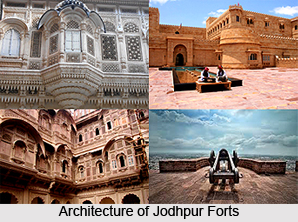 Jodhpur is a prominent city of Rajasthan and is a reservoir of magnificent palaces and majestic forts. Set in the landscape of the Thar Desert, the city of Jodhpur is known as the Sun City. It is also referred to as the Blue City due to the indigo tinge of the whitewashed houses around the Mehrangarh Fort. The old city of Jodhpur is surrounded by a stone wall and the new city is on the other side of the railway tracks, in the southeastern direction. The new palace houses the royal family in one half, while the other half is a high class hotel.
Jodhpur is a prominent city of Rajasthan and is a reservoir of magnificent palaces and majestic forts. Set in the landscape of the Thar Desert, the city of Jodhpur is known as the Sun City. It is also referred to as the Blue City due to the indigo tinge of the whitewashed houses around the Mehrangarh Fort. The old city of Jodhpur is surrounded by a stone wall and the new city is on the other side of the railway tracks, in the southeastern direction. The new palace houses the royal family in one half, while the other half is a high class hotel.
Jodhpur was the capital of the Marwar kingdom till the 13th century when the Rathore clan conquered it. In 1459, the present city was developed by Rao Jodha. A branch of this family built Bikaner, Pokhran and Jaisalmer. Jodhpur was a prominent nodal city for trade between the east and the west and is now the second largest city of Rajasthan. Jodhpur is a home of several new architectural patterns which has enriched the panorama of Indian architecture.
The Umaid Bhawan Palace of Jodhpur is noted for its imposing architectural features. The construction of the palace was actually aimed as a public relief and employment project during a long period of drought. Chittor sandstone has been used in the construction of this palace which imparts a special effect on it. The architecture of the palace was designed by a British architect who has rendered an indo saracenic style of architecture in it. The main features of architecture of Umaid Bhawan palace is beautiful balconies, green gardens, charming courtyards, and stately rooms. At present the palace has been converted into a heritage hotel and a royal museum. The Mehrangarh Fort majestically perched on a rocky mountain, at a height of hundred and twenty meters looks down on the city below. The architecture of the fort is very impressive and it is one of the largest forts in India. The fort wall has seven entrances and a number of palaces within, all connected with courtyards. The structures with their Bengaldar roofs bear a resemblance to the Bikaner Palace and have a strong influence of Islamic architecture. The only difference is that where Islamic palaces stand independ¬ently, here all the buildings stand in one continuous row.
The Jaswant Thada palace is half-way up the hill, built intricately with white marble and has elaborate sculptures in the traditional style. Inside is a big hall with a steel frame, built as a mausoleum for Jaswant Singh II. The exterior with its open platform and flowing water is especially noteworthy. The Balsamad lake palace of Jodhpur summer palace built in the European style, with a garden in the Mughal style, facing a man-made lake.
Jodhpur with numerous historical monuments and royal palaces is a coveted place for travelers. The architecture of Jaipur is renowned all over the world and makes it one of the most popular travel destinations.
Economy of Jodhpur
Jodhpur is economically flourished with the textiles. There are other industries like metal crafts, bicycles, ink, glass crafts, cutlery, carpets, marble products and sporting goods, which crater economy to the city.
Culture of Jodhpur
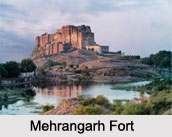 Jodhpur is culturally enriched with its cuisine. Lassi, Mawa Ki Kachori, Pyaaj Ki Kachori, Mirchi Bada, Dal Bati Churma, Lasan Ki Chutney, Mirchi Ka Kutaa, Gatte Ki Sabji, Ker Sangri Sabzi, Halwa, Kachara Mircha Sabzi and Kadhi Pakoda are the popular dishes here.
Jodhpur is culturally enriched with its cuisine. Lassi, Mawa Ki Kachori, Pyaaj Ki Kachori, Mirchi Bada, Dal Bati Churma, Lasan Ki Chutney, Mirchi Ka Kutaa, Gatte Ki Sabji, Ker Sangri Sabzi, Halwa, Kachara Mircha Sabzi and Kadhi Pakoda are the popular dishes here.
Historical Monuments Of Jodhpur
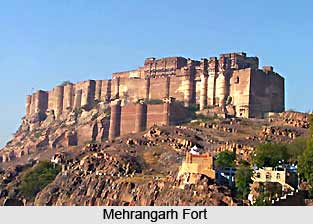 Monuments of Jodhpur display a fine exhibition of local vernacular architecture. There are a number of famous palaces and forts which figure among the monuments of Jodhpur. Each of them has a history behind it, telling an ancient story of Rajput rule. Once the capital of the old princely state of Marwar, Jodhpur ranks as the second largest city of Rajasthan. It was a prime city for trade and commerce between the east and the west. After the defeat of the Rathors of Kanauj in 1211, Rao Siha came to Rajasthan and founded a settlement here. Later the Rajputs established themselves in Marwar with Mandor as the capital. Jodhpur was founded by Rao Jodha in 1459, after he had been expelled from Mandor, which was too vulnerable. As a result the site of Jodhpur was chosen which was impregnable, dominating the Thar Desert. Currently, the old city of Jodhpur is surrounded by a stone wall and the new city is on the other side of the railway tracks, in the southeastern direction.
Monuments of Jodhpur display a fine exhibition of local vernacular architecture. There are a number of famous palaces and forts which figure among the monuments of Jodhpur. Each of them has a history behind it, telling an ancient story of Rajput rule. Once the capital of the old princely state of Marwar, Jodhpur ranks as the second largest city of Rajasthan. It was a prime city for trade and commerce between the east and the west. After the defeat of the Rathors of Kanauj in 1211, Rao Siha came to Rajasthan and founded a settlement here. Later the Rajputs established themselves in Marwar with Mandor as the capital. Jodhpur was founded by Rao Jodha in 1459, after he had been expelled from Mandor, which was too vulnerable. As a result the site of Jodhpur was chosen which was impregnable, dominating the Thar Desert. Currently, the old city of Jodhpur is surrounded by a stone wall and the new city is on the other side of the railway tracks, in the southeastern direction.
In Jodhpur are seen many new designs of architecture. A strong influence of Islamic architecture can be seen among the various monuments of Jodhpur. Indo- Saracenic style is the most dominant feature of the various constructions of monuments.
<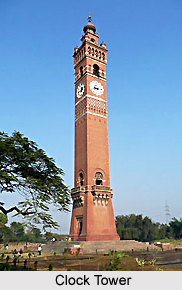 Jodhpur abounds in a number of historic monuments carrying in them the legacy of the Rajput rulers. One of the prime monuments of Jodhpur is the Mehrangarh fort. It is situated 400 feet above the plain on a steep escarpment. There is a drop of 120 feet at the South end. The fort is enclosed by a high wall with bastions. The summit is divided into three areas: the palace to the north-west, the strongly fortified area to the south edge of the cliff and a long, wide terrace to the east of the palace. The approach to the fort is via seven huge gateways on the west side of the hill.
Jodhpur abounds in a number of historic monuments carrying in them the legacy of the Rajput rulers. One of the prime monuments of Jodhpur is the Mehrangarh fort. It is situated 400 feet above the plain on a steep escarpment. There is a drop of 120 feet at the South end. The fort is enclosed by a high wall with bastions. The summit is divided into three areas: the palace to the north-west, the strongly fortified area to the south edge of the cliff and a long, wide terrace to the east of the palace. The approach to the fort is via seven huge gateways on the west side of the hill.
Found within the fortifications are a number of palaces and other constructions. The Old Palaces are a series of interconnecting courtyards surrounded by ranges of buildings with intricate carved stonework and beautiful filigree sandstone windows. Commenced in 1499, the surviving apartments generally date from 1640 onwards. The palaces found herein are the Moti Mahal, Phool Mahal, Sukh Mahal, Zanki Mahal, Umaid Mahal, Zenana Mahal, Sheesh Mahal, Rang Mahal and Chandan Mahal. Also found within are the Sileh Khana or the armoury, the Takhat Vilas, cenotaphs and ancient canons, galleries and museums.
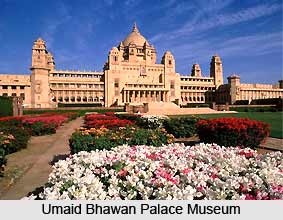 Located to the left of the Mehrangarh fort complex is the Jaswant Thada of Jodhpur. It is a nineteenth century royal cenotaph which has been built in commemoration of Maharajah Jaswant Singh II. The tomb was built by the son of the Maharajah, and the main memorial has been constructed to resemble a temple. There are two more cenotaphs near the tomb. Close to this, is the royal crematorium and three other cenotaphs. The Jaswant Thada is a white marble memorial with intricate carvings. The stones are extremely thin and polished. Also found on the cenotaph is a beautiful marble jail work.
Located to the left of the Mehrangarh fort complex is the Jaswant Thada of Jodhpur. It is a nineteenth century royal cenotaph which has been built in commemoration of Maharajah Jaswant Singh II. The tomb was built by the son of the Maharajah, and the main memorial has been constructed to resemble a temple. There are two more cenotaphs near the tomb. Close to this, is the royal crematorium and three other cenotaphs. The Jaswant Thada is a white marble memorial with intricate carvings. The stones are extremely thin and polished. Also found on the cenotaph is a beautiful marble jail work.
Apart from the fort and the monuments contained within it, certain other monumental structures can also be found in the city of Jodhpur. The Umaid Bhavan Palace was built between 1929 and 1944 as a famine relief exercise. It was designed by Henry Lanchester, an architect with a keen interest in Baroque civic classicism. This vast monolithic pile is conceived in the classical grand manner, but on an Indian plan. It contains 347 rooms, including eight dining-halls. The nuances and details are Hindu and the materials, red sandstone and marble. The Umaid Bhavan Palace is now a hotel. A part of the Palace is still occupied by the descendants of the Maharajah. Recently, the Royal family has allowed a part of the museum to be converted to a museum.
The Umaid Bhawan Palace Museum exhibits a fine collection of items of royal use. Found here is a large collection of ornate mirrored furniture, rare collection of clocks and watches, fine China, glass and crystal ware, old photographs etc.
One of the oldest landmarks in the city is the Clock Tower. It stands in the midst of the busy Sadar Market area within the old city. It is an ornate structure constructed in the nineteenth century.
The Rai ka Baag Palace lies to the South-East of the new city. It was built by the Queen of Maharajah Jaswant Singh I in 1663. This palace was among one of the favourites of the King and he often stayed here. At present the palace houses the income tax office.
A number of palaces have now been converted for purposes of civic use. The Tulahati Mahal built by Jaswant Singh I, is now a women`s hospital. The Ratnada Palace has now been given over for military use.
The monuments of Jodhpur are famous for their architectural and construction styles. They are still preserved in a good condition today mainly due to the combined efforts of the Tourism department of Rajasthan Government and the Royal Families of Rajasthan.
Religious Monuments Of Jodhpur
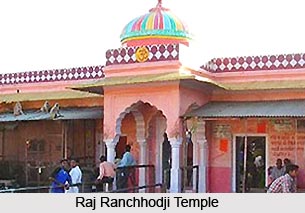 A number of temples are found among the religious monuments of Jodhpur. Since the Rajput rulers of the place were mainly followers of Hinduism, temples are the prime religious monuments found at Jodhpur. The Raj Ranchhodji Temple was built by Queen Jadechi of Rajkanwar. She built the temple after the death of her husband Maharaja Jaswant Singh. The temple has mostly been constructed using red sandstone. It is adorned with carvings and beautiful filigree work on the stone. The black marble statue of Ranchhodji is placed inside the temple. The main door of the temple is beautifully constructed with red, yellow and blue stained glass windows.
A number of temples are found among the religious monuments of Jodhpur. Since the Rajput rulers of the place were mainly followers of Hinduism, temples are the prime religious monuments found at Jodhpur. The Raj Ranchhodji Temple was built by Queen Jadechi of Rajkanwar. She built the temple after the death of her husband Maharaja Jaswant Singh. The temple has mostly been constructed using red sandstone. It is adorned with carvings and beautiful filigree work on the stone. The black marble statue of Ranchhodji is placed inside the temple. The main door of the temple is beautifully constructed with red, yellow and blue stained glass windows.
 The Achal Nath Shivalaya temple is also found among the monuments of Jodhpur. It was constructed by Nanak Devi, the Queen of Rao Ganga in 1531. The temple, dedicated to Lord Shiva, consists of a large water reservoir called the Ganga Bawari in the temple complex. The temple consists of a number of different halls- Mandap Bhawan, Kirtan Bhawan and Garbh Griha. Carved Chhitar stone has been used in the construction of these halls.
The Achal Nath Shivalaya temple is also found among the monuments of Jodhpur. It was constructed by Nanak Devi, the Queen of Rao Ganga in 1531. The temple, dedicated to Lord Shiva, consists of a large water reservoir called the Ganga Bawari in the temple complex. The temple consists of a number of different halls- Mandap Bhawan, Kirtan Bhawan and Garbh Griha. Carved Chhitar stone has been used in the construction of these halls.
The Rasik Bihari Temple in Jodhpur is also known as the Niniji Temple. It is dedicated to Rasik Bihari, Lord Krishna and Radha. Also found here are statues of Lord Vishnu, Krishna and Garuda on both sides of the hall doors. The temple has Sabha Mandaps or meeting halls built with red sandstone pillars. The Garbh Grihai is located inside the temple complex, surrounded by a gallery made of white stone.
The Siddhanth Shiv temple of Jodhpur lies between the Takhat Sagar Hills. The temple is said to have been built by a handicapped saint named Gaurishankar, later known as Nepali Baba. He only had four fingers in each of his hand and foot yet he built this entire temple himself by cutting stones.
 The Kunj Bihari temple is dedicated to Lord Krishna. It is located on the banks of the Gulab Sagar Lake. The temple has been splendidly constructed, particularly the top and the entrance. Placed at the entrance to the temple is a statue of Mirabai, the greatest devotee of Lord Krishna. To the right of Meera is a statue of a saint, Namdeo. To the left is the statue of Lord Hanuman. Inside the temple is the Central Hall or the garbhagriha, where there is a statue of Lord Krishna placed in such a way that it faces Meera at the entrance.
The Kunj Bihari temple is dedicated to Lord Krishna. It is located on the banks of the Gulab Sagar Lake. The temple has been splendidly constructed, particularly the top and the entrance. Placed at the entrance to the temple is a statue of Mirabai, the greatest devotee of Lord Krishna. To the right of Meera is a statue of a saint, Namdeo. To the left is the statue of Lord Hanuman. Inside the temple is the Central Hall or the garbhagriha, where there is a statue of Lord Krishna placed in such a way that it faces Meera at the entrance.
The Udai Mandir of Jodhpur is yet another work of architectural beauty. The main temple stands on a huge platform supported by 102 pillars. The upper part of the temple is made of carved sandstone. Beautiful paintings with 84 Yogasanas are found inside the mandir. Also found within are pictures of Nath Yogis made up with gold. The garbhagriha or the central hall is covered with a cloth on the upper portion. There is a finely carved railing of sandalwood running around it. The door of the main temple is also made up of beautifully carved sandalwood.
The Baba Ramdeo temple is an old construction, of prime interest due to its antiquity. It stands on top of a sandstone hill on the route between the Jalori Gate and Nagori Gate. This temple is also known as the Adhar Shila temple. There are a number of legends and local beliefs that surround this temple. Outside the main entrance to the temple, on a tiny rock are inscribed the words `enter at your own risk`. This further adds to the mystic value of the temple.
The Mahamandir lies about one and a half miles to the north-east of the city. It was constructed in 1812 AD. It is a huge temple set in a separate enclave of 800 houses.
Museums in Jodhpur
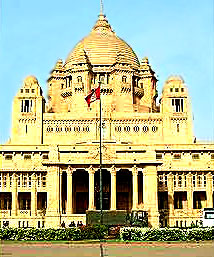 The best places to know more about the history of the district are the Museums in Jodhpur<. As a part of sightseeing tours the travelers will definitely be introduced to these museums. Almost all of them are located within the palace or fort premises. Tourists from all over the world visit these monuments. Besides the artifacts the museums are a pivotal source to know more about the royal people and their lifestyle. Guided tours are available for these museums here. Local transportations are available for arriving at these museums at Jodhpur. The museums in this district are:-
The best places to know more about the history of the district are the Museums in Jodhpur<. As a part of sightseeing tours the travelers will definitely be introduced to these museums. Almost all of them are located within the palace or fort premises. Tourists from all over the world visit these monuments. Besides the artifacts the museums are a pivotal source to know more about the royal people and their lifestyle. Guided tours are available for these museums here. Local transportations are available for arriving at these museums at Jodhpur. The museums in this district are:-
Government Museum in Jodhpur: It is located on the High Court Road and stands at the middle of the Umaid public gardens. During the reign of Maharaja Umaid Singhji both the museum building and the garden was constructed. The museum houses numerous weapons that the Rajputs used. Besides the weapons attires, Rajasthani miniature portraits and items of local talents are also displayed here.
Paintings of the rajas, important manuscripts and images of Jain Tirthankaras are also exhibited here. These latter items reflect the religious beliefs of the people. Hinduism was not the only major religious force at that time. The museum also has a library and a zoo. Within the museum stuffed animals are also to be found. The recreational activities of the royal people had put the wild animals on display at the museum. In the military section wooden models of biplanes are present and a magnificent brass battleship.
Umaid Bhavan Palace Museum: The palace itself is worth checking out. Professionals from the west were hired to construct the palace. Maharaja Umaid Singhji had established this palace. The museum displays a wide array of items used by the royal family. Here too one will come across weapons as well as antiques. Several trophies are also displayed at the museum. A huge banner presented by Queen Victoria and an exclusive collection of vintage clocks is also put on display here.
Mehrangarh Fort Museum: One of the most important and oldest forts in Jodhpur is the Mehrangarh Fort. The museum situated within it is truly the finest one in Jodhpur. The entire museum has been beautifully laid out for the vigil of the tourists. The palanquin section is the most often visited by the travelers. Here a wide collection of old palanquins has been kept. It will be quite interesting to check this out. Besides these there are apparels, paintings and decorated period rooms. This museum will give an insight into the grand lifestyle of the royal families.
Tourism in Jodhpur
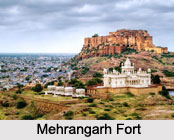 Tourism in Jodhpur is nourished with popular tourism attractions like Mehrangarh Fort, Umaid Vilas Palace, Chamunda Devi Temple, Jaswant Thada, Mandore Gardens, Kailana Lake and many others.
Tourism in Jodhpur is nourished with popular tourism attractions like Mehrangarh Fort, Umaid Vilas Palace, Chamunda Devi Temple, Jaswant Thada, Mandore Gardens, Kailana Lake and many others.
Mehrangarh Fort
Mehrangarh Fort is the oldest fort in Jodhpur. This fort in Jodhpur is enclosed by thick walls. This fort has seven gates. One such gate was dedicated to mark the defeat of the Mughals.
Umaid Bhawan Palace
Umaid Bhawan Palace is now a heritage hotel and it has an exclusive collection of Rajasthani paintings belonging to the Rajasthani Schools of Painting.
Khejarla Fort
Khejarla Fort is set in the midst of the village settlements. It is now also converted into a hotel. This fort is an eminent example of Rajput art and architecture.
Phool Mahal
Phool Mahal was constructed by Abhay Singh. Phool Mahal was used as a private audience hall and there present the portraits of several classical musicians of India.
Jhanki Mahal
Jhanki Mahal is known as the abode of royal ladies to watch the official proceedings in the court of the kings. Located in the courtyard of Mehrangarh Fort, it has been converted into a museum.
Moti Mahal
Moti Mahal is filled with the latticed windows (jali windows). The work is so fine that from a distance it seems that they are made of lace.
Chamunda Devi Temple
Chamunda Devi Temple is dedicated to Goddess Chamunda. The idol was brought by Rao Jodha but it was destroyed in an explosion. The idol was reconstructed by Takhat Singh.
 Jaswant Thada
Jaswant Thada
Jaswant Thada is known as the royal crematorium of Jaswant Singh II. Built in all white marble, it is situated in close proximity to Mehrangarh Fort. This monument was built in 1899. The portraits of various rulers of Jodhpur are also placed here.
Jodhpur Government Museum
Jodhpur Government Museum is a museum located in Umaid Gardens. This museum is the collection house of many royal relics.
Ghanta Ghar
Ghanta Ghar also known as the clock tower is located near the busy market area of Jodhpur.
Mahamandir Temple
Mahamandir Temple was constructed in 1812. Besides being a place of worship it is also an architectural delight. Mahamandir Temple is supported by 84 pillars.
Sardar Samand Palace
Sardar Samand Palace is the hunting lodge of the royal families of Jodhpur. This house has the vast collection of Rajasthani paintings.
Ranisar Padamsar
Ranisar and Padmasar are two adjacent artificial lakes that were constructed in the year 1459. These lakes were constructed to cool down the temperature of the fort and the nearby villages.
Heritage Hotels in Jodhpur
 Jodhpur is the city of palaces; some of the palaces have been converted into hotels. These hotels are a retreat of royal insignia with a modern touch. These palaces serve as historical hotels where one can have the royal Rajputi aura along with all the modern amenities. They are the reflections of the bygone eras.
Jodhpur is the city of palaces; some of the palaces have been converted into hotels. These hotels are a retreat of royal insignia with a modern touch. These palaces serve as historical hotels where one can have the royal Rajputi aura along with all the modern amenities. They are the reflections of the bygone eras.
Ajit Bhawan Hotel: This heritage hotel is more like a Mahal or palace with a medium size lobby and all authentic themes. Ajit Bhawan is India"s first Heritage Hotel, which is located in the serene desert of Rajasthan; this is the main attraction of this hotel. Ajit Bhawan is totally adorned with Rajput charm from its core and it was constructed for Maharajadhiraj Sir Ajit Singh. He was the younger brother of Maharaja Shri Umaid Singh of Jodhpur in 1927. Situated in the heart of Blue City, Ajit Bhawan globally enjoys a prestigious reputation. The rooms of the hotel are decorated with the artifacts of the Maharajas and the furniture is even royally furnished to give a total royal aura to its visitors. The rooms are categorized in deluxe room, deluxe tent, vintage suite, Ajit suite, and presidential suite; they are divided on the basis of facilities and the area of the rooms.
Devi Bhawan Hotel: Located on the outskirts of the Jodhpur city, Devi Bhawan Hotel is mostly popular for its attractive garden, which also features an excellent swimming pool. The rooms of the hotel are positioned around the garden in 5 two-storey buildings. The rooms are segmented in standard rooms and deluxe rooms according to their facilities.
Pal Haveli Hotel: Pal Haveli, situated in the heart of Jodhpur"s ancient walled city, is surrounded by high walls inside the Mehrangarh Fort. This two centuries old palace now serves as a museum, which exhibits the Rajput antiques, weaponry and treasures. Pal Haveli with its 21 en-suite bedrooms has been resided by the generations of the Pal family.
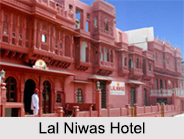 Lal Niwas Hotel: Situated in the Phalodi town of Jodhpur district, Lal Niwas is another heritage property which was formerly a mansion but now turned into a hotel. Intricately crafted on red sandstone, Lal Niwas is a magnificent Haveli, which was built in 1750. It is bounded with traditional balconies, terraces and doors that add an authentic royal touch to this hotel. This heritage hotel also has a library that houses books and manuscripts dating back to princely times.
Lal Niwas Hotel: Situated in the Phalodi town of Jodhpur district, Lal Niwas is another heritage property which was formerly a mansion but now turned into a hotel. Intricately crafted on red sandstone, Lal Niwas is a magnificent Haveli, which was built in 1750. It is bounded with traditional balconies, terraces and doors that add an authentic royal touch to this hotel. This heritage hotel also has a library that houses books and manuscripts dating back to princely times.
Fort Chanwa Hotel: Fort Chanwa is located in Luni, which has its 64 well maintained rooms and they present the best example of elegance and symmetry in Indian architecture. The entire Hotel Chanwa is carved out of the famous red sandstone. There are intricately carved Jharokhas that add to the beauty of each room. The fort has a great composition of some complex courtyard towers, stairs and unexpected passages. All the rooms and the lobbies are adorned with traditional paintings which show the excellence of craftsmanship.
Haveli Inn Pal: This historical hotel is situated near to the Mehrangarh Fort, Jaswant Thada and Umaid Bhawan Palace. This palace has been converted to a heritage hotel, which reminds of the Rajput grandeur along with modern touch. Its 21 renovated rooms maintain the original ancient structure and elegance with wooden ceilings and antique furnishings.
Karni Bhawan Hotel: Karni Bhawan is the home of the erstwhile Jagirdars of Sodawas, Bhati Rajputs of the Lunar dynasty. This palace, made out of red sandstone, consists of lush green lawns and open-air poolside restaurants. The rooms of this hotel are decorated with royal furniture along with modern amenities.
Other Heritage Hotels in Jodhpur
Apart from the above mentioned hotels, there are some other heritage hotels in Jodhpur and they are Jhalamand Garh, Fort Khejarla, Polo Heritage, Raas, Ranbanka Palace, Balsamand Lake Palace and Garden Retreat, Chandelao Garh, Hanwant Mahal, Umaidnagar Fort, etc.
Travel Information on Jodhpur
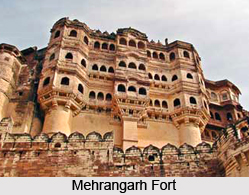 Travel Information on Jodhpur will help the travelers to gather traveling tips about the place they are planning to visit. It is one of the popular tourist destinations in Rajasthan. The nearest airport is the Jodhpur Airport that is located at a distance of 5 kilometers from the city center. From cities like Delhi, Mumbai, Udaipur and Jaipur flights services are available for Jodhpur. Jodhpur is also well connected by railway lines. `Palace on Wheels` is one of the best ways to explore the district. The local transport in Jodhpur comprise of taxis, tongas and auto rickshaws.
Travel Information on Jodhpur will help the travelers to gather traveling tips about the place they are planning to visit. It is one of the popular tourist destinations in Rajasthan. The nearest airport is the Jodhpur Airport that is located at a distance of 5 kilometers from the city center. From cities like Delhi, Mumbai, Udaipur and Jaipur flights services are available for Jodhpur. Jodhpur is also well connected by railway lines. `Palace on Wheels` is one of the best ways to explore the district. The local transport in Jodhpur comprise of taxis, tongas and auto rickshaws.
The best time to visit the place is from October to March. Apart from checking out the superb local attractions the travelers can dig their teeth into the scrumptious local dishes. Several restaurants offer the local dishes. Shopping is another option for the tourists. Local arts and crafts are available in abundance in Jodhpur.
The tourist attractions in Jodhpur include forts, palaces, temples and gardens. Numerous festivals and fairs are also part of this state. One of the unique festivals of Jodhpur is Marwar Festival, which is held between September and October. The folk culture of Jodhpur is presented at its best at this festival.
The kingdom of Jodhpur was once upon a time ruled by the Rathores. This ruling class also ruled upon Marwar and Bikaner. They claimed that they were the descendants of Lord Rama. As a result the Rathores also referred themselves as Suryavanshi, the family that is related to the Sun god. The first settlement of the Rathores was in Pali. It was Rao Jodha who actually established the city of Jodhpur in 1459. The history of Jodhpur initially sounds like a fairy tale. The king established his kingdom at this place on the advice of a hermit. The place was then a simple settlement on a rocky hill. The fort building that was built here was the Chintamani fort, which was later, renamed as Mehrangarh fort.
After being driven away from Kannauj by Mohammed Ghori it was incredible of this clan to reestablish a city as beautiful as Jodhpur. Rao Jodha ruled for 30 years and the after him the responsibility of the kingdom passed on to Surajmal, his son. It was during his reign that Jodhpur and the Mughals fell apart. Surajmal died in the battle against Sikandar Lodi. He was succeeded by Rao Ganga Singh. He ruled for another 16 years in Jodhpur. He also took part in the war against Babur and was defeated. Fortunately Babur showed no interest in Jodhpur. Hence the region remained devoid of Mughal interference and invasions until Akbar descended the throne. During this time Raja Maldeo extended his kingdom till Bikaner.
When Akbar ascended the throne his troops attacked and captured Jodhpur and the Nagore forts. He then handed them over to Rai Singh of Bikaner. This region was at that time a part of the kingdom of Jodhpur. All of Raja Maldeo`s efforts for reconciliation could not win Akbar over. Rather it was Udai Singh who made peace with the Mughal Emperor. The relation was further strengthened between the two clans by marital bonds. Jodha Bai, Udai Singh`s sister was married to Akbar. Akbar returned all the possessions he had captured from Jodhpur. Jodhpur had assisted Akbar in conquering several regions and in expanding the Mughal dominion in India.
During the battle of succession between the sons of Shah Jahan the then king of Jodhpur, Jaswant Singh supported Dara. Aurangzeb`s conspiracies led to the fall of the king and his son. Aurangzeb also tried to kill the infant son of Jaswant Singh, Ajit Singh. But the intelligence of Durga Das foiled his plans. Enraged he raided Jodhpur and wrecked the city. After the death of Aurangzeb Ajit Singh formed an alliance with the rulers of Jaipur and Durga Das and reclaimed the throne of Delhi from the Mughals. It was under his rule that the region prospered. He reestablished that was essentially Rajputana in his kingdom and denounced anything that was Muslim or Mughal. Unfortunately he was killed by his own son.
With King Ajit the golden era of Jodhpur also passed away. From then on Jodhpur witnessed conflicts and connivances. Around 1753 the Marathas were growing in power and Jodhpur passed onto their hands. In the later years the one name that stands out in the history of Jodhpur is that Man Singh. With him on the throne Jodhpur was once again in a safe custody. The valorous king was succeeded by Pratap Singh. Both these rulers developed cordial relations with the British.
According to the history of Jodhpur the foundation for the modern district was laid down by Pratap Singh. He was succeeded by Umaid Singh who ruled from 1918-1947. With efforts from these rulers the city was not only beautified but it was established as one of the modern cities.
